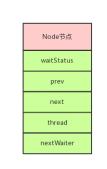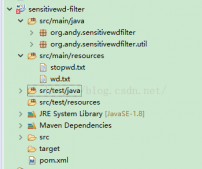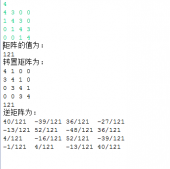在项目实际开发过程中,我们有很多这样的业务场景:一个事务中处理完一个业务逻辑后需要跟着处理另外一个业务逻辑,伪码大致如下:
|
1
2
3
4
5
6
7
8
9
|
@Servicepublic class ProductServiceImpl { ... public void saveProduct(Product product) { productMapper.saveOrder(product); notifyService.notify(product); } ...} |
很简单并且很常见的一段业务逻辑:首先将产品先保存数据库,然后发送通知。
某一天你们可能需要把新增的产品存到Es中,这时候也需要代码可能变成这样:
|
1
2
3
4
5
6
7
8
9
10
|
@Servicepublic class ProductServiceImpl { ... public void saveProduct(Product product) { productMapper.saveProduct(product); esService.saveProduct(product) notifyService.notify(product); } ...} |
随着业务需求的变化,代码也需要跟着一遍遍的修改。而且还会存在另外一个问题,如果通知系统挂了,那就不能再新增产品了。
对于上面这种情况非常适合引入消息中间件(消息队列)来对业务进行解耦,但并非所有的业务系统都会引入消息中间件(引入会第三方架构组件会带来很大的运维成本)。
Spring提供了事件驱动机制可以帮助我们实现这一需求。
Spring事件驱动
spring事件驱动由3个部分组成
- ApplicationEvent:表示事件本身,自定义事件需要继承该类,用来定义事件
- ApplicationEventPublisher:事件发送器,主要用来发布事件
- ApplicationListener:事件监听器接口,监听类实现ApplicationListener 里onApplicationEvent方法即可,也可以在方法上增加@EventListener以实现事件监听。
实现Spring事件驱动一般只需要三步:
- 自定义需要发布的事件类,需要继承ApplicationEvent类
- 使用ApplicationEventPublisher来发布自定义事件
- 使用@EventListener来监听事件
这里需要特别注意一点,默认情况下事件是同步的。即事件被publish后会等待Listener的处理。如果发布事件处的业务存在事务,监听器处理也会在相同的事务中。如果需要异步处理事件,可以onApplicationEvent方法上加@Aync支持异步或在有@EventListener的注解方法上加上@Aync。
源码实战
创建事件
|
1
2
3
4
5
|
public class ProductEvent extends ApplicationEvent { public ProductEvent(Product product) { super(product); }} |
发布事件
|
1
2
3
4
5
6
7
8
9
10
11
12
13
14
15
|
@Servicepublic class ProductServiceImpl implements IproductService { ... @Autowired private ApplicationEventPublisher publisher; @Override @Transactional(rollbackFor = Exception.class) public void saveProduct(Product product) { productMapper.saveProduct(product); //事件发布 publisher.publishEvent(product); } ...} |
事件监听
|
1
2
3
4
5
6
7
8
9
10
11
12
13
14
|
@Slf4j@AllArgsConstructorpublic class ProductListener { private final NotifyService notifyServcie; @Async @Order @EventListener(ProductEvent.class) public void notify(ProductEvent event) { Product product = (Product) event.getSource(); notifyServcie.notify(product, "product"); }} |
在SpringBoot启动类上增加@EnableAsync 注解
|
1
2
3
4
5
6
7
|
@Slf4j@EnableSwagger2@SpringBootApplication@EnableAsyncpublic class ApplicationBootstrap {...} |
使用了Async后会使用默认的线程池SimpleAsyncTaskExecutor,一般我们会在项目中自定义一个线程池。
|
1
2
3
4
5
6
7
8
9
10
11
12
13
14
15
16
17
18
19
20
21
22
23
24
25
26
27
|
@Configurationpublic class ExecutorConfig { /** 核心线程数 */ private int corePoolSize = 10; /** 最大线程数 */ private int maxPoolSize = 50; /** 队列大小 */ private int queueCapacity = 10; /** 线程最大空闲时间 */ private int keepAliveSeconds = 150; @Bean("customExecutor") public Executor myExecutor() { ThreadPoolTaskExecutor executor = new ThreadPoolTaskExecutor(); executor.setCorePoolSize(corePoolSize); executor.setMaxPoolSize(maxPoolSize); executor.setQueueCapacity(queueCapacity); executor.setThreadNamePrefix("customExecutor-"); executor.setKeepAliveSeconds(keepAliveSeconds); // rejection-policy:当pool已经达到max size的时候,如何处理新任务 // CALLER_RUNS:不在新线程中执行任务,而是由调用者所在的线程来执行 executor.setRejectedExecutionHandler(new ThreadPoolExecutor.CallerRunsPolicy()); executor.initialize(); return executor; }} |
到此这篇关于SpringBoot实现异步事件驱动的方法的文章就介绍到这了,更多相关SpringBoot 异步事件驱动内容请搜索服务器之家以前的文章或继续浏览下面的相关文章希望大家以后多多支持服务器之家!
原文链接:https://blog.csdn.net/jianzhang11/article/details/118209620














